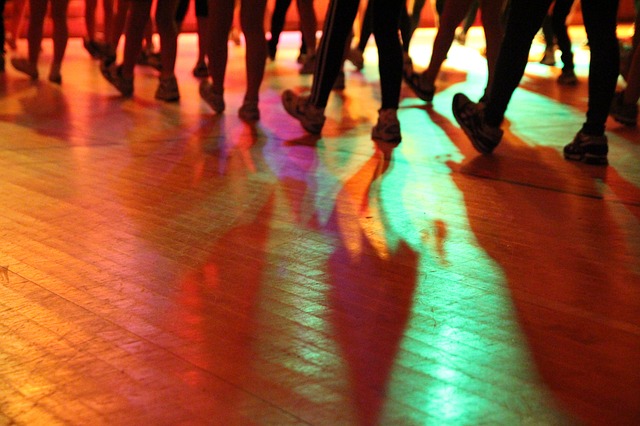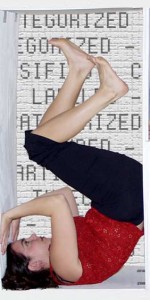
by Janet Rothwell
This past semester I had the opportunity to teach a high school dance class to students with special needs. From this experience, I have learned the value of movement to all bodies and seen the positive changes that can occur for students because of the opportunity to move. Dance educators need to be empowered to teach all kinds of minds and bodies that we might come across, and all too often this population can easily be left out of the dance field.
Working alongside special needs teachers, I created a structure that supports multiple behavior issues, adheres to NCAS, and offers students opportunities to practice social and emotional skill-building, such as staying on task, showing respect and care for peers, and more. Creative problem solving activities that foster accomplishments and growth in confidence and competency help to create an environment of respect and student engagement.
My personal creativity has been challenged and fulfilled through working with these students. My students have a wide range of physical disabilities from wheelchair-bound, to walking with assistance, to slight physical limitations. They also have a wide range of intellectual disabilities, ranging from low functioning autism to slight cognitive impairments. Their unique needs push my skills in new and enlightening ways. I learned how to craft an effect movement lesson so that each student is engaged the whole time and few behaviors arise. I kept activities short and varied to maintain student focus in the class. Freeze dance with creative shapes in the body was a great way to introduce levels while transitioning to a new activity. Lessons included the use of Laban efforts, creative choreography projects and props. Some examples of props used are spots on the floor so students know where their place is in the space, and creating an obstacle course with hula-hoops, ribbon sticks, and plastic cones.
 Every day I wrote the order of class on the whiteboard so students would know what to expect next. A consistent warm up helped my students get focused at the start of class each day. I used basic isolations throughout the body, followed by improvisation traveling across the floor. For example, “hop like a frog,” “travel low on the floor like a crab,” and “walk, kick legs across the floor,” etc. Constant positive encouragement made a big difference for my students. They really grew and took chances following my supportive feedback.
Every day I wrote the order of class on the whiteboard so students would know what to expect next. A consistent warm up helped my students get focused at the start of class each day. I used basic isolations throughout the body, followed by improvisation traveling across the floor. For example, “hop like a frog,” “travel low on the floor like a crab,” and “walk, kick legs across the floor,” etc. Constant positive encouragement made a big difference for my students. They really grew and took chances following my supportive feedback.
Creative Dance Project example: I will use the example of a scary Halloween dance that I did with my class to demonstrate what worked well for them. First, the students learned scary movements like spider fingers (wiggling fingers creepy), Frankenstein arms (walk like a Zombie), skeleton knees (knees shaking in and out), and ghost arms (arms floating at side). I wrote the names of the movements and the order we did them on the whiteboard. When the time came for them to create their own pattern, we had visual images of each movement on paper for students to use to assist in this process.
Students got a paper timeline and cut and pasted the movement images onto the timeline in the order in which they wanted to do them. Students practiced their sequence, some added a change of facing (walls had colored paper on them to help with this), then one by one each student performed their solo for the group. We talked about being a good audience member (watching, listening, applauding). Students also made scary paper masks that they could wear while they danced if they wanted to. This activity was great for students of all ranges of abilities. There were many ways to differentiate instruction and challenge those more advanced students like changing facings with movements. I also kept it easier for students with more severe disabilities by holding their timeline in front of them while they performed for the group.
After teaching this class I still have these lingering questions which I will continuously try to answer: How can we maintain a dance classroom of respect and safety with students with special needs? How can we utilize student aides in the most effective way? What is appropriate movement to expect from students within a large spectrum? How can we challenge creativity and performance with this group of students?
Have you taught this population before? Do you have any thoughts you’d like to share regarding your experience? We’d love to hear any comments you may have…

Contributor Janet (Neidhardt) Rothwell has been a dance educator for 10 years. She has taught modern, ballet, and jazz at various studios and schools on Chicago’s North Shore. She received her MA in Dance with an emphasis in Choreography from the University of North Carolina-Greensboro and her BA in Communications with a Dance Minor from the University of Wisconsin-Madison. Throughout her time in graduate school, Janet performed with Sidelong Dance Company based in Winston-Salem, NC.
Currently, Janet teaches dance at Adlai E. Stevenson H.S. in IL. She regularly seeks out professional development opportunities to continue her own artistic growth. Recently, Janet performed with Keigwin and Company in the Chicago Dancing Festival 2012 and attended the Bates Dance Festival.
When she isn’t dancing, Janet enjoys teaching Pilates, practicing yoga, and running races around the city of Chicago.




